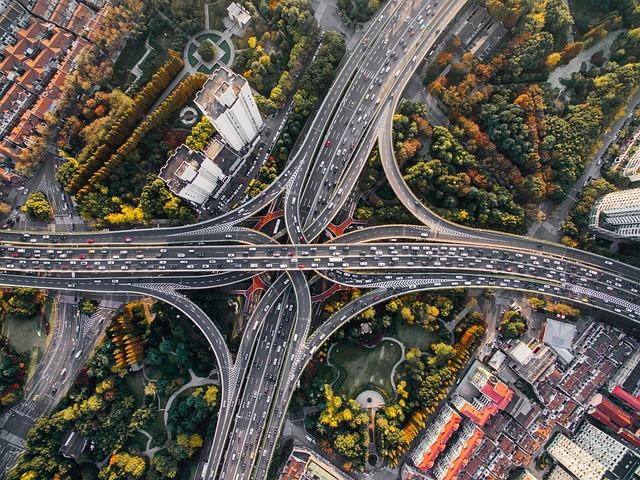In the tapestry of a nation’s progress, infrastructure serves as the foundational thread—an often-overlooked yet indispensable element that weaves together the complexities of economic growth, social cohesion, and national identity. As Pakistan stands at a pivotal juncture in its history, the urgency to invest in and modernize its infrastructure has never been more pronounced. From bustling urban centers to remote rural landscapes, the quality of roads, railways, energy systems, and communication networks not only dictates the efficiency of daily life but also shapes the aspirations and potential of its people. In this article, we embark on a journey to explore the critical role that infrastructure plays in building Pakistan’s future, examining the challenges that lie ahead, the opportunities that abound, and the strategic imperatives necessary to pave the way toward a more prosperous and resilient nation. Join us as we uncover how the investment in infrastructure is not merely an act of construction, but a commitment to the enduring legacy of development and progress for generations to come.
Rethinking Urban Centers: Designing Smart Cities for Sustainable Growth
Imagining urban spaces that resonate with the rhythm of their inhabitants means embracing advanced technologies that lead to smarter, sustainable design. Smart cities represent a transformative vision for urban centers, intertwining connectivity, efficiency, and environmental conservation. To realize these aspirations, an eco-centric infrastructure must be prioritized, enhancing daily life while minimizing ecological footprints. Key components of successful smart city planning include:
- Integrated public transport that reduces traffic congestion.
- Renewable energy sources powering city services.
- Smart waste management systems that optimize collection routes.
- IoT-enabled infrastructure for real-time data about urban dynamics.
Adopting these innovative strategies requires a commitment to collaboration among stakeholders—government, businesses, and citizens. Innovative materials and design techniques can further ensure the resilience and adaptability of urban areas in the face of challenges such as climate change and population growth. A quick comparison highlights the potential benefits:
| Traditional Infrastructure | Smart Infrastructure |
|---|---|
| High energy consumption | Energy-efficient systems |
| Traffic congestion | Optimized traffic flow |
| Limited public engagement | Active citizen participation |

Connecting the Nation: Enhancing Transportation Networks for Economic Prosperity
Developing a robust transportation network is essential for economic growth. As Pakistan seeks to elevate its status on the global stage, investment in infrastructure serves as a pivotal strategy to connect regions and facilitate commerce. Improved roads, railways, and airways not only enhance the movement of goods and services but also catalyze regional development and create new opportunities. The integration of various transport systems streamlines logistics, reducing costs and time, thus making Pakistani products more competitive in international markets.
Key initiatives in infrastructure projects can yield significant benefits, including:
- Job Creation: Infrastructure development generates employment opportunities across various sectors, from construction to logistics.
- Increased Accessibility: Improved transport links can connect remote areas to larger markets, promoting local businesses and entrepreneurship.
- Economic Diversification: Enhanced networks stimulate investment in diverse industries, reducing reliance on traditional sectors.
To effectively leverage these advantages, a coordinated policy approach is required:
| Initiative | Description |
|---|---|
| Public-Private Partnerships | Encourage investment through collaborative projects to share risks and rewards. |
| Technology Integration | Utilize smart transport solutions to enhance efficiency and tracking. |
| Regional Connectivity | Focus on linking urban and rural areas to ensure inclusive growth. |
By prioritizing these strategic developments, Pakistan can create a resilient framework for its economy, fostering growth and ensuring a prosperous future for generations to come.

Empowering Communities: The Importance of Local Infrastructure Development
Investing in local infrastructure is essential for fostering sustainable development and enhancing the quality of life in communities across Pakistan. Robust infrastructure not only facilitates transportation and connectivity but also creates a foundation for economic growth. Consider the following critical aspects:
- Access to Services: Well-developed infrastructure ensures that residents can easily access healthcare, education, and essential public services.
- Economic Opportunities: Improved roads, bridges, and telecommunications can stimulate local businesses and attract investments, leading to job creation.
- Social Cohesion: Community infrastructure, such as parks and recreational facilities, encourages social interaction and fosters a sense of belonging among residents.
Moreover, the development of sustainable infrastructure is paramount in addressing the challenges posed by climate change and urbanization. By prioritizing eco-friendly practices and involving local communities in decision-making processes, projects can be tailored to meet the unique needs of each area. Key benefits include:
| Benefit | Description |
|---|---|
| Sustainable Growth | Promotes long-term economic viability and environmental protection. |
| Community Engagement | Involves residents in planning, ensuring the solutions meet their actual needs. |
| Resilience | Enhances the ability of communities to respond to natural disasters and economic shocks. |

Harnessing Innovation: Leveraging Technology for Infrastructure Resilience
In the pursuit of a robust infrastructure, adopting cutting-edge technology is imperative for enhancing resilience against the challenges posed by climate change and urbanization. By integrating smart solutions into infrastructure development, we can not only improve the efficiency of existing systems but also anticipate future demands. Key components of this technological transformation include:
- IoT Integration: Utilizing sensors to monitor infrastructure health in real-time.
- Data Analytics: Leveraging big data to forecast infrastructure needs and identify potential vulnerabilities.
- Climate-Resilient Materials: Investing in innovative construction materials that withstand extreme weather conditions.
- Renewable Energy Solutions: Incorporating solar and wind energy into infrastructure projects to promote sustainability.
To effectively implement these technologies, collaboration among government, private sector, and academia is essential. Establishing public-private partnerships can facilitate resource pooling and knowledge sharing, leading to smarter investment strategies. Consider the following strategic actions:
| Strategy | Benefits |
|---|---|
| Public-Private Partnerships | Increased funding and shared expertise |
| Research and Development Initiatives | Innovative solutions tailored to local needs |
| Community Engagement Programs | Enhanced public support and awareness |
To Wrap It Up
the journey toward building a robust future for Pakistan hinges significantly on the development of infrastructure. As we stand at a crossroads, the decisions made today will echo through generations, shaping the economic landscape and enhancing the quality of life for millions. The road ahead is undoubtedly fraught with challenges, yet it is also rich with opportunities. By prioritizing strategic investments in transportation, energy, healthcare, and education facilities, Pakistan can not only bolster its national framework but also empower its communities to thrive.
Let us envision a future where seamless connectivity, sustainable energy, and modern public services foster innovation and resilience. In this collective endeavor, collaboration among government, private sectors, and citizens is essential. Together, we can pave the way for a new era—one where infrastructure becomes the backbone of prosperity, harnessing the full potential of a dynamic and diverse nation. As we embark on this transformative path, let us remain steadfast in our commitment to laying the foundations of a brighter tomorrow for all Pakistanis.



